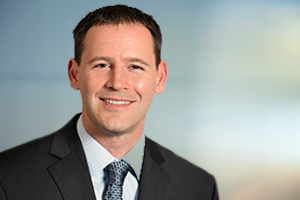RGA is excited to announce that Brian Millman, Vice President MIB Group, Inc. and MIB Inc., will be one of our featured speakers at the 7th Annual RGA Fraud Conference on August 18-20, 2019. MIB, a key strategic partner of RGA, is the life and health insurance industry’s most trusted and secure resource for data-driven risk management services that protect the financial integrity of its members and address their evolving needs. One of MIB’s core services is to help to detect fraud, errors, and omissions on insurance applications. As a preview to his presentation, we sat down with Brian to get his unique perspective on some of the issues around fraud facing insurers today.
We’re looking forward to your presentation at the RGA Fraud Conference. Why is it important for the industry to come together around this issue?
It impacts all of us – direct writing carriers, their reinsurers, as well as the end consumer in the form of higher premiums necessary to cover fraud. And as insurers digitize processes and move toward data-driven solutions and fluid-less accelerated underwriting, this inevitably introduces new opportunities for fraud. The actual mortality experience data from accelerated underwriting does not exist yet, which further emphasizes the need for industry-wide sharing of ideas and information. And this is of course what MIB’s mission is all about.
Events like the RGA Fraud Conference are extremely important to foster an industry dialogue. This particular conference does a great job of showing all aspects of insurance fraud by cutting across functions – from application to claim. While MIB collects data from the North American insurance industry for underwriting, the industry currently lacks a workflow for insurers to automatically share data for claims and other key steps in the insurance process. Getting together to share experiences and practices informally at events like the RGA Fraud Conference is a step in that direction.
Why is insurance such an attractive target for fraud?
To begin with, insurance is a huge industry that transacts large amounts of money, so the opportunity is there. Added to that is an often-negative view of insurers. To a perpetrator, the insurance companies are perceived as impersonal, deep-pocket organizations with marble lobbies and skyscraper facades – not exactly the most sympathetic victim, especially for smaller instances of fraud that may go unnoticed. And as a business built on trust, insurance offers multiple openings for fraud to occur, from submitting an application through to making a claim. In fact, in the form of subtle “mis-truths” people commit insurance fraud all the time without even realizing they are doing it.
How can someone commit insurance fraud and not know it?
In these cases, it is not so much “fraud” as it is an unintentional lack of disclosure — that’s human nature. When providing information about ourselves, whether it be an insurance application or an online dating site, we convey reality through our own set of filters. Take smoking, for example. If someone who may smoke occasionally but intends to quit in the near future is asked, “Are you a smoker?” that person may truthfully (to them) respond “no,” as they don’t consider themselves to be a smoker.
Is this where behavioural economics can help?
Exactly. Our increasing understanding of behavioural economics will be a powerful tool in fraud prevention. Evidence shows that if we instead asked that same occasional smoker, “How many cigarettes do you smoke in a week?” and provide choices, we are much more likely to get the truth. Examples like this abound. Simply having people sign an agreement at the beginning of an application that they will be truthful in their responses versus having them confirm they have been truthful at the end produces markedly improved results.
You mentioned that a negative view of insurers contributes to fraudulent activity. How can insurers improve their image?
Better customer engagement will help. Most policyholders interact with their insurance company once a year as the premium is due. It’s hard to develop feelings of loyalty and trust with such a distant relationship. And the irony is that both the insurer and insured have a vested interest in that person living a long, healthy life. So, I think becoming long-term partners in health and well-being and regularly engaging policyholders over time through healthy living incentives and other value-added services will make shared goals more apparent to both parties. Insureds will receive greater benefits and insurers will earn greater loyalty from consumers, as well as getting to know their policyholders at a much deeper level.
What are the most important steps insurers can take to combat fraud moving forward?
Data holds the key. The more we know about applicants and policyholders, the less likely fraudsters will be to claim to be something they’re not. We must invest the time and resources to develop processes for effectively and ethically accessing new data sources and the expertise to transfer that data into actionable insights. Secondly, we need to move forward together. By partnering with other carriers, insurtechs, and other third-party experts, insurers can better protect themselves against new types of fraud that may arise. Finally, we need to do all of this as soon as possible. Insurance has been around for a long time and as a result has legacy systems and technologies in place that can make it very difficult to be agile. Yet we must find ways to move forward quickly, because fraudsters certainly aren’t going to wait for us.


.jpg?sfvrsn=f16b105a_3)
